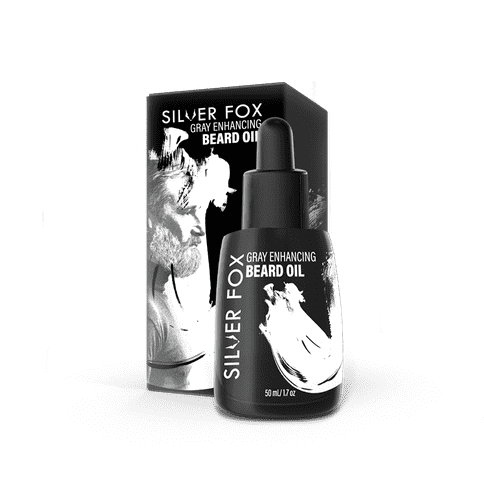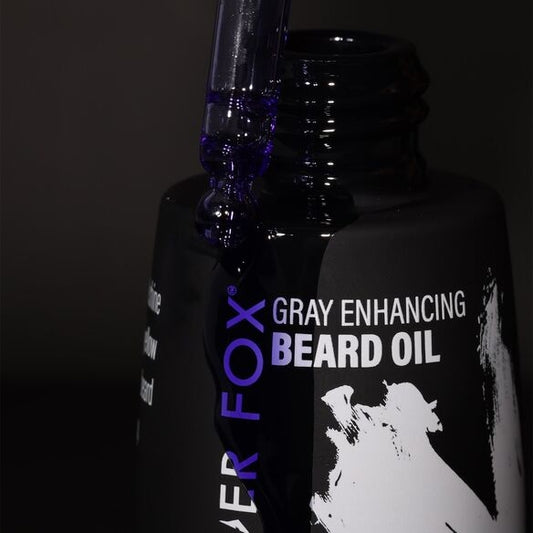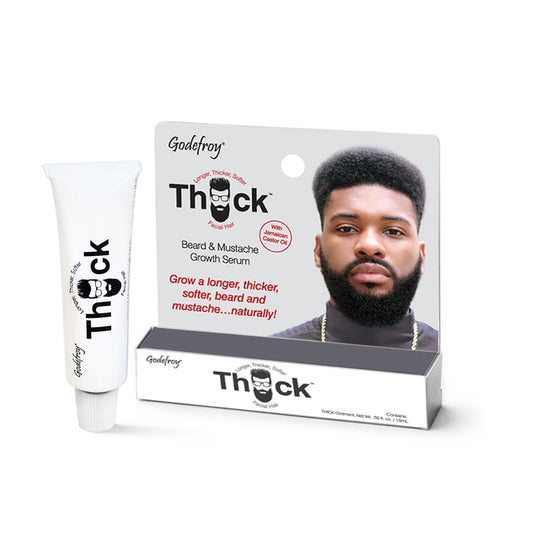Beard Growth: Myths vs. Facts
By Ivanna Nguyen & Juliet Torres Gonzales
By Ivanna Nguyen & Juliet Torres Gonzales
Beard culture is booming, but misinformation is just as widespread. From old-school grooming tales to viral TikTok tips, separating fact from fiction is critical if you want real results. This guide will tackle the most persistent myths about facial hair growth with clarity and evidence. If you've ever wondered why your beard isn’t filling in, whether shaving helps, or if growth serums are worth the hype—keep reading. The truth behind the beard starts here!

Myth #1: Shaving Makes Your Beard Grow Thicker
Many believe shaving regularly stimulates thicker, denser beard growth. However, this is merely a visual and tactile illusion. Shaving cuts the hair at the skin's surface, creating blunt ends that feel coarser and seem thicker initially. But, research shows that shaving has no effect on actual follicle count, hair growth rate, or hair texture. The number and activity of follicles remain unchanged. This myth likely persists due to the timing of hair regrowth and the contrast of dark stubble against light skin, which can appear denser.
Myth #2: Everyone Can Grow a Full Beard with Time
It's a misconception that persistence alone guarantees a full beard. Genetics play a critical role in determining follicular density, hair texture, and regional growth patterns. Ethnic background can influence where and how facial hair develops. Some men will never grow terminal hair in specific areas like the cheeks or jawline due to a lack of active follicles in those zones. No product or grooming routine can override these genetic limits.

The Real Drivers of Beard Growth: Genetics and Hormones
Facial hair development is controlled by androgens—primarily testosterone and its more potent form, dihydrotestosterone (DHT). These hormones trigger the transformation of vellus (peach fuzz) into terminal (coarse) hair during puberty. The extent and pattern of this transformation are determined by your genetics.
Genetic coding affects both the number of follicles and their sensitivity to androgens. Two men with identical hormone levels can have vastly different beards depending on how their follicles respond. For example, strong growth on the chin but sparse cheeks is a common pattern linked to androgen receptor distribution. Beard maturity also varies by age; some men don’t reach full density until their 30s. Ultimately, no product or regimen can override your genetic blueprint or alter receptor sensitivity.
Lifestyle Factors That Support (or Harm) Growth
When it comes to growing a fuller, healthier beard, lifestyle matters more than you might think. While genetics and hormones lay the groundwork, your daily habits can either support or sabotage progress.
- Sleep: Skimping on sleep can reduce testosterone levels—the very hormone that fuels facial hair development. Aim for 7–9 hours of restful sleep per night to support hormone production and cell repair.
- Stress: Chronic stress floods the body with cortisol, a hormone that interferes with testosterone and slows hair growth. High-stress levels can also trigger hair shedding or thinning. Managing stress through mindfulness, exercise, or sleep can help keep beard growth on track.
- Nutrition: A balanced diet fuels follicle function. Deficiencies in nutrients like biotin, zinc, vitamin D, and iron have been linked to hair thinning and slow growth. Incorporating lean proteins, healthy fats, fruits, and leafy greens into your routine can help ensure your beard gets the nourishment it needs.
- Exercise: Regular physical activity improves circulation, which means more oxygen and nutrients are delivered to hair follicles. Resistance training and high-intensity workouts also help elevate testosterone levels naturally.

@beardcraftsociety_ 🚫 Myth Busted: Shaving doesn’t make your beard grow back thicker or faster! Here’s the truth: When you shave, you’re cutting hair at its thickest point, the base. As it grows back, the blunt ends make it feel thicker or coarser, but in reality, your hair’s texture, density, and growth rate are determined by genetics and hormones—not shaving. What really works? A consistent skincare and grooming routine, proper nutrition, and patience. Stop shaving for “thicker” growth, and start focusing on what actually helps your beard thrive. Have you believed this myth before? Let’s discuss in the comments! #BeardMythBusted #BeardGrowthFacts #PatchyBeardSolutions #BeardCareTips #GrowYourBeard #HealthyBeard #BeardJourney #BeardcraftSociety #MensGrooming #BeardGoals #ThriveWithYourBeard ♬ original sound - Joseph Sosa- Beard Coach
What to Avoid:
- Smoking constricts blood vessels and limits oxygen to the follicles, stunting growth.
- Excessive alcohol can impact liver function and hormone balance.
- Chronic sleep deprivation lowers testosterone and interferes with the body’s natural recovery processes.
A solid self-care routine isn't just good for your overall well-being but is also a major player in achieving your beard growth goals!
What Actually Works:
From viral TikTok trends to $80 growth oils, the beard care market is full of promises—but which products actually work?
- Minoxidil: Originally developed for treating high blood pressure, minoxidil is FDA-approved for scalp hair regrowth and often used off-label for beards. It increases blood flow to hair follicles and prolongs the growth (anagen) phase. With consistent application over several months, it has been shown to improve beard density.
- Castor Oil: This popular ingredient is constantly gaining traction for its natural support of hair health. Castor oil contains ricinoleic acid and omega-6 fatty acids,which may enhance circulation and nourish follicles.
- Godefroy’s Proven Routine: If you’re looking to simplify your beard growth strategy without compromising results, we recommend our Silver Fox Beard Oil, THICK Beard & Mustache Serum, and Beard Grooming Kit. Packed with nourishing oils like argan and castor, this trio hydrates, softens, strengthens, targets patchiness, and helps shape your beard—delivering real results with minimal effort.
Beard Grooming Collection
-
Regular price$14.95Regular priceSale price$14.95 Save $-14.95 (%)Unit priceperSilver Fox Beard Oil for Gray Hair
-
Regular price$14.95Regular priceSale price$14.95 Save $-14.95 (%)Unit priceperTHICK BEARD & MUSTACHE GROWTH SERUM
-
Regular price$44.95Regular priceSale price$44.95 Save $-44.95 (%)Unit priceperSilver Fox Complete Men's Grooming Collection
@itsnazary How to grow a beard My genetics wont let me grow a beard so i made sure to try everything and this is what worked for me. #minoxidil #beard #dermaroller #beardtiktok ♬ original sound - itsnazary
Setting Realistic Expectations for Your Beard Journey
Growing a beard isn’t a race—it’s a journey. And like any journey, it’s full of ups, downs, and a lot of waiting.
Understand Your Unique Timeline: Not everyone sees results in the same timeframe. Some men begin to notice significant growth in their early 20s, while others may not see full maturity until their 30s. Genetics, hormone levels, and lifestyle factors all affect this timeline.
Groom Along the Way: Just because your beard isn’t fully filled in yet doesn’t mean you should neglect it. Trim stray hairs, shape your neckline, and use a quality oil or balm to maintain softness. Check out our previous blog on beard grooming for more tips!
Be Kind to Your Beard (and Yourself): Not all beards will be thick and full, and that’s okay. Embracing what you do grow and learning to style it confidently is part of the process.
At the end of the day, beard growth is about more than just biology—it's about routine, patience, and self-care. So whether you’re just starting or fine-tuning your grooming game, remember: your beard, your pace. Thanks for reading!
Read More
-

Skinimalism Is Not “Less Makeup.” It’s Better Taste.
Andrew CampbellSkinimalism makeup isn’t about skipping products—it’s a refined “less is more” aesthetic. Discover how this trend’s focus on healthy skin,...
-

How Water, Chlorine, and Sunlight Affect Your Hair Color
Andrew CampbellLet’s be honest—once you’ve colored or bleached your hair, keeping it vibrant is basically a part-time job. Even with salon-grade formulas and sulfate-free shampoo, the...
-

Upcoming Beauty Trends: What to Look Out For in 2026
Emersen AdamsBeauty in 2026 is less about chasing a single “look” and more about building routines that fit your life and...










